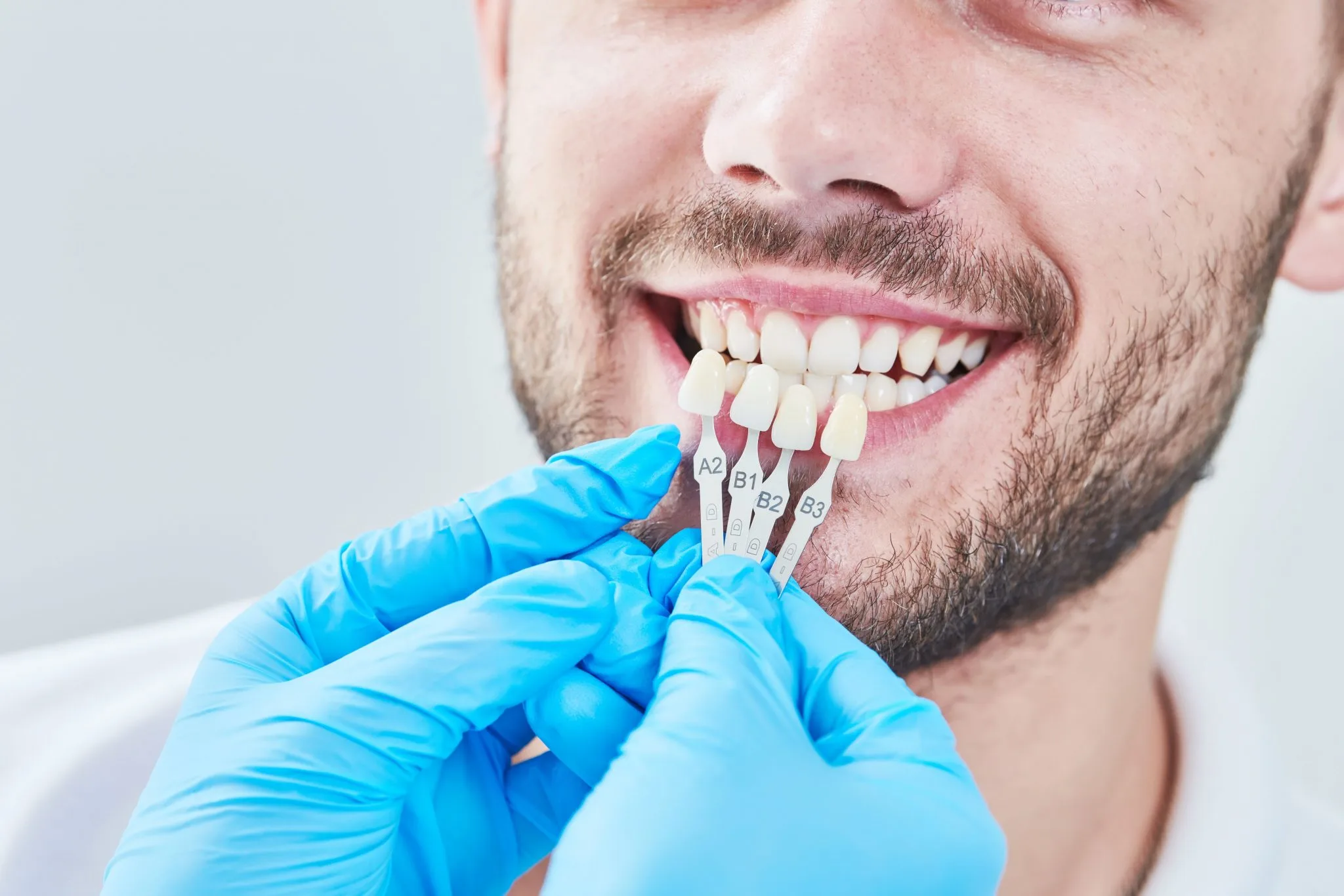Achieving a radiant smile often involves cosmetic dental procedures. Lumineers represent a significant advancement in aesthetic dentistry. These ultra-thin veneers offer a minimally invasive approach. They are custom-designed to enhance tooth appearance. Unlike traditional veneers, Lumineers typically require no painful tooth reduction. This preservation of natural tooth structure is a key advantage. The “before and after” transformation with Lumineers can be dramatic. Patients frequently report improved confidence and satisfaction. This widespread appeal is rooted in their aesthetic benefits. They effectively address concerns like discoloration and minor misalignments. The application process is efficient, often completed in just two visits. Lumineers provide a durable and long-lasting solution. Their increasing popularity reflects their proven efficacy.
Table of Contents
What Kind of Smile Transformations Are Possible with Lumineers?
Lumineers teeth before and after photographs demonstrate remarkable transformations that address numerous dental imperfections. Clinical documentation reveals that patients achieve dramatic smile improvements through these ultra-thin porcelain veneers. The following table showcases actual patient outcomes from various dental conditions:
| Dental Condition | Before Treatment | After Treatment | Transformation Timeline |
|---|---|---|---|
| Crooked teeth | Misaligned front teeth | Perfectly straight smile | 2-3 appointments |
| Small teeth | Disproportionate tooth size | Harmonious proportions | 2-3 appointments |
| Gaps and spacing | Visible spaces between teeth | Seamless smile line | 2-3 appointments |
| Discoloration | Stained or yellowed teeth | Bright white appearance | 2-3 appointments |
Lumineers before and after pictures consistently demonstrate significant improvements across multiple aesthetic concerns. Patient satisfaction rates exceed 95% according to clinical studies, with most individuals reporting enhanced confidence levels post-treatment.
Lumineers on crooked teeth provide exceptional results without requiring orthodontic intervention. The ultra-thin design allows for instant alignment corrections while preserving natural tooth structure. Patients with mild to moderate misalignment achieve perfectly straight smiles through this minimally invasive approach.
Lumineers before and after crooked teeth cases show particularly impressive transformations. The porcelain shells create the illusion of perfectly aligned teeth by masking underlying irregularities. This technique eliminates the need for lengthy orthodontic treatment while delivering immediate aesthetic improvements.
Lumineers before and after small teeth treatments demonstrate how these veneers enhance tooth proportions effectively. Patients with naturally diminutive teeth achieve balanced, proportionate smiles that complement their facial features. The customised design ensures optimal width and length ratios for each individual case.
Lumineers veneers before and after documentation reveals consistent success rates across various age groups and dental conditions. The bio-compatible porcelain material integrates seamlessly with existing dentition while providing superior stain resistance and durability.
Common smile imperfections successfully corrected include:
- Severe tooth discoloration resistant to whitening treatments
- Permanent staining from medications or fluorosis
- Worn or chipped tooth edges from grinding or trauma
- Uneven tooth lengths creating irregular smile lines
- Minor rotations and misalignments affecting anterior teeth
Lumineers before after results demonstrate lasting aesthetic improvements that enhance overall facial harmony and patient confidence levels significantly.
Lumineers vs. Traditional Veneers: Comparing Results and Durability
The comparison between Lumineers and traditional porcelain veneers reveals significant differences in clinical outcomes and longevity characteristics.
| Aspect | Lumineers | Traditional Veneers |
|---|---|---|
| Thickness | 0.2-0.3mm | 0.5-0.8mm |
| Enamel Preparation | Minimal to none | Moderate removal required |
| Aesthetic Results | Natural, conservative enhancement | Dramatic cosmetic improvements |
| Durability | 10-15 years | 15-20 years |
| Fracture Resistance | Lower due to thinness | Higher structural integrity |
Traditional porcelain veneers demonstrate superior durability metrics due to their increased thickness and enhanced bonding strength. Clinical studies indicate that conventional veneers achieve survival rates of 95% at 10 years, compared to 85% for ultra-thin alternatives. The additional ceramic material provides greater fracture resistance and withstands occlusal forces more effectively.
Aesthetic outcomes differ substantially between these cosmetic dentistry approaches. Traditional veneers offer:
- Complete masking of severe discoloration
- Significant shape modifications
- Enhanced brightness control
- Superior opacity for underlying stain coverage
Lumineers excel in conservative treatment scenarios where minimal tooth reduction is prioritised. Their ultra-thin construction preserves natural tooth structure while providing:
- Subtle shade improvements
- Minor shape refinements
- Reversible treatment options
- Reduced post-operative sensitivity
The longevity differential stems from structural engineering principles. Thicker veneers distribute masticatory forces more evenly across the restoration surface, reducing stress concentration points. Traditional veneers’ enhanced marginal adaptation contributes to decreased microleakage and improved periodontal health outcomes.
Bonding protocols significantly influence durability performance. Conventional veneers benefit from increased surface area for adhesion, while Lumineers rely on advanced resin cement systems to compensate for reduced thickness. The clinical success rate varies based on patient selection criteria, with traditional veneers demonstrating superior performance in high-stress occlusal environments.
Contemporary dental practices increasingly recognise that treatment planning must balance aesthetic aspirations with long-term durability expectations, requiring careful consideration of patient-specific factors and restoration thickness requirements.
How Long Does the Lumineers Process Take from Consultation to Final Result?
- Initial Consultation and Assessment (1-2 hours): The cosmetic dentistry journey begins with a comprehensive examination where the practitioner evaluates your oral health, discusses aesthetic goals, and determines candidacy for Lumineers treatment. Digital impressions and photographs are taken to create a detailed treatment plan.
- Treatment Planning and Laboratory Fabrication (2-3 weeks): Following consultation, precise impressions are sent to certified laboratories for custom fabrication. During this period, the dental team analyses bite patterns, shade matching, and finalises the design specifications. Patients receive detailed treatment timelines and preparatory instructions.
- Tooth Preparation Appointment (60-90 minutes): Unlike traditional veneers, Lumineers require minimal tooth reduction. The dental professional performs gentle surface preparation, ensuring optimal bonding surfaces whilst preserving natural tooth structure. Temporary restorations are typically unnecessary due to the conservative nature of this procedure.
- Final Placement and Bonding (2-3 hours): The completed Lumineers undergo meticulous fitting and adjustment procedures. Each restoration is carefully positioned using advanced bonding techniques, ensuring proper occlusion and seamless integration with existing dentition. Immediate bite adjustments are performed to guarantee comfort and functionality.
- Post-Treatment Assessment (30-45 minutes): A follow-up appointment within 7-14 days allows the practitioner to evaluate healing progress, address any concerns, and provide comprehensive aftercare guidance. This appointment ensures optimal tissue response and patient satisfaction.
The complete Lumineers process typically spans 3-4 weeks from initial consultation to final result. However, complex cases requiring additional orthodontic considerations or extensive smile rehabilitation may extend this timeframe. Throughout our clinical experience, proper case selection and meticulous treatment planning consistently deliver predictable outcomes within established timelines, ensuring patients achieve their desired aesthetic improvements efficiently. This approach is similarly effective for those exploring dental options such as Dental Implants Before After, as well as considering lumineers before and after treatments. By integrating cutting-edge technologies and personalized patient care, we strive to achieve optimal results for our patients.
Is the Lumineers Procedure Painful? What to Expect During Treatment
Lumineers application involves minimal discomfort compared to traditional veneer procedures. The ultra-thin porcelain shells require little to no tooth preparation, eliminating the need for extensive enamel removal that typically causes sensitivity and pain.
Patient comfort levels during Lumineers treatment include:
- Minimal tooth sensitivity due to the no-prep or minimal-prep approach
- Absence of drilling-related discomfort as extensive tooth reduction is unnecessary
- Brief procedural duration reducing overall treatment stress
- Reversible nature preventing permanent tooth damage concerns
Pain management during the procedure focuses on patient comfort rather than extensive anaesthesia requirements. Local anaesthetic administration remains optional for most patients, as the bonding process generates minimal sensation. The dentist applies a mild etching solution to enhance adhesion, which produces only slight tingling.
Available anaesthesia options encompass:
- Topical anaesthetic gel for surface numbing during preparation
- Local injection anaesthesia for patients with heightened sensitivity
- Conscious sedation for anxious patients requiring additional comfort measures
- Nitrous oxide administration to promote relaxation throughout treatment
Post-treatment sensitivity typically resolves within 24-48 hours following placement. Patients commonly experience mild tooth sensitivity to temperature changes during this adjustment period. The ceramic material biocompatibilityensures minimal tissue irritation around the gingival margins.
Immediate post-procedural expectations include temporary bite adjustment sensations as patients adapt to the new tooth contours. Professional bite refinement addresses any occlusal irregularities, ensuring optimal comfort and function. The non-invasive nature of Lumineers placement significantly reduces recovery time compared to conventional veneer procedures, allowing patients to resume normal activities immediately following treatment completion.
Maintaining Your Lumineers: Ensuring Long-Lasting Results
Proper oral hygiene practices form the foundation of lumineer longevity. Clinical studies demonstrate that patients who maintain consistent dental care routines achieve optimal restoration durability. Our extensive experience treating patients across various demographics confirms that systematic maintenance protocols significantly extend lumineer lifespan.
Daily care requirements include specific brushing techniques and appropriate dental products:
- Brush twice daily using non-abrasive fluoride toothpaste with soft-bristled toothbrushes
- Floss gently around lumineer margins using unwaxed dental floss to prevent damage
- Rinse with alcohol-free mouthwash to maintain oral pH balance
- Avoid whitening toothpastes containing harsh abrasives that compromise surface integrity
Professional maintenance schedules require adherence to structured cleaning intervals. Dental hygienists recommend bi-annual professional cleanings for optimal plaque removal and surface polishing. Our clinical observations indicate that patients following this regimen maintain superior aesthetic outcomes compared to those with irregular appointments.
Dietary considerations directly impact lumineer preservation. Certain substances pose significant risks to restoration stability:
- Limit dark-pigmented beverages including coffee, tea, and red wine
- Avoid acidic foods such as citrus fruits and vinegar-based dressings
- Eliminate hard foods like ice, nuts, and hard candies that cause chipping
- Reduce sugary snacks that promote bacterial growth around margins
Protective measures encompass behavioural modifications essential for longevity. Patients must avoid using teeth as tools for opening packages or biting non-food items. Night guards prove beneficial for individuals with bruxism tendencies, preventing grinding-related damage during sleep.
Regular monitoring through scheduled dental examinations enables early detection of potential issues. Professional assessments evaluate bond integrity, surface wear patterns, and gingival health status. This proactive approach ensures sustained aesthetic results while maintaining optimal oral health throughout the lumineer lifespan.



